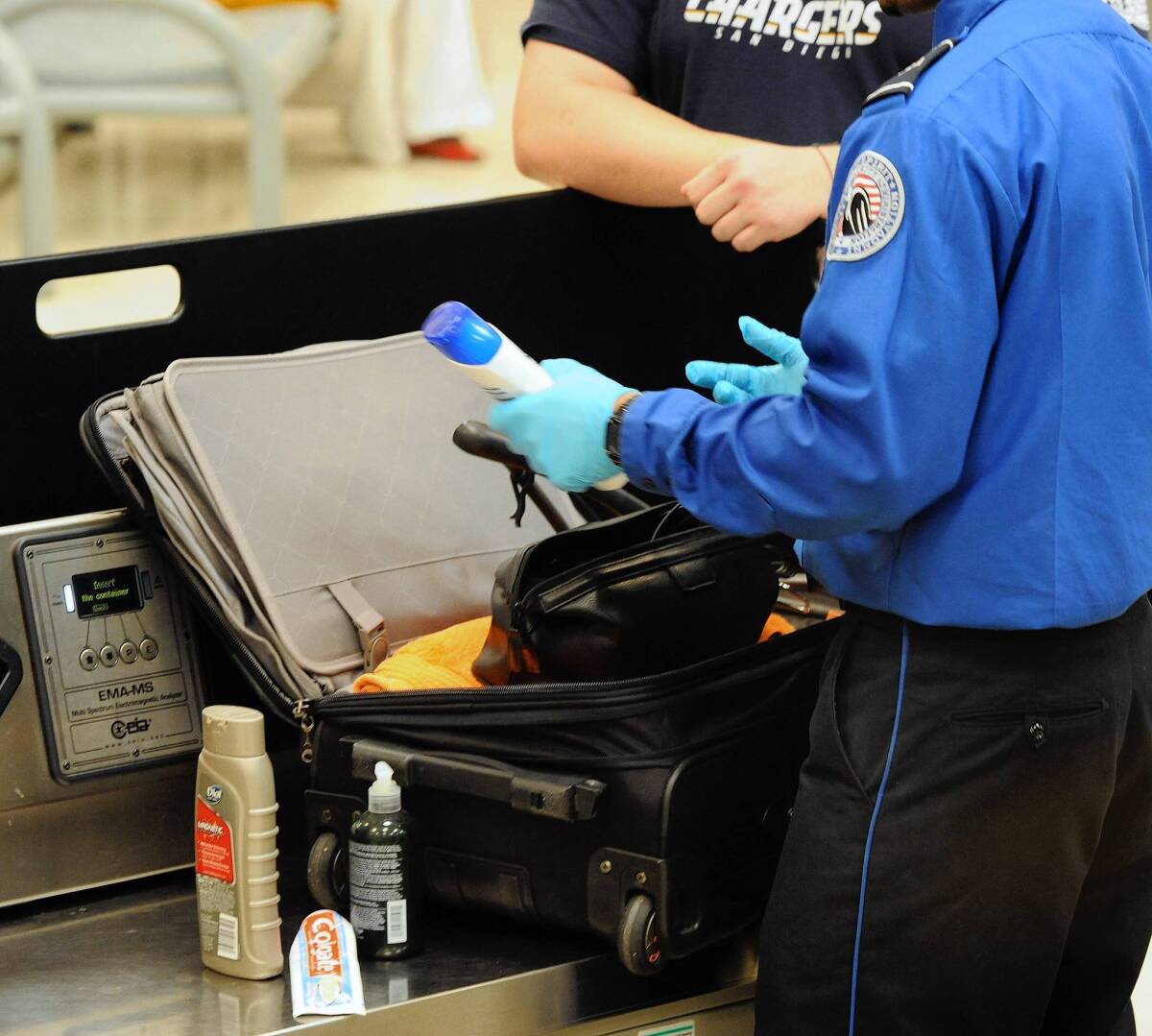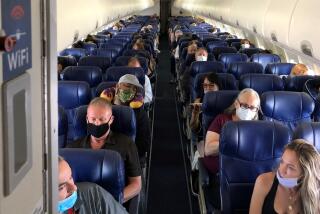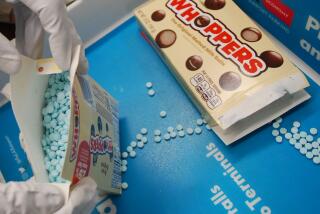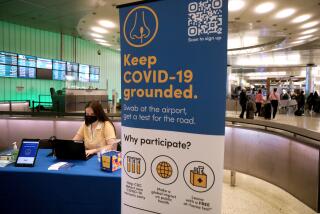Liquids ban to be lifted at European airports; is the U.S. next?

- Share via
Are you tired of having airport security screeners toss away your bottles of water, shampoo or lotion? Change is on the way in some parts of the world.
Battelle, a nonprofit research and development organization in Ohio, has built a screening device that London’s Heathrow Airport began installing last week to test liquids carried by passengers onto planes. Heathrow Airport screeners will begin using the device in January, when the European Union will start allowing some liquids, aerosols and gels onto planes under a phased timetable.
In the U.S., Transportation Security Administration officials are looking into several technologies for liquids screening. Battelle officials say their liquids scanner, the LS10, is among those devices.
But the TSA says you shouldn’t expect to carry your favorite bottle of soda or shampoo onboard at U.S. airports in the near future.
“Liquid explosives are a serious threat, and we aren’t ready to move away from the ban on liquids,” the TSA said in a statement.
The Battelle screening device uses this technology to test containers of liquid for potential explosives: A radio frequency wave and an ultrasonic pulse are passed through the liquids so the device can assess the contents by analyzing the signals after they pass through.
The LS10 device looks like a slot machine. An airport screener places a bottle of liquid into an opening in the machine and then pulls down a large black lever, which starts the testing mechanism. The device can be used with see-through or opaque bottles, metal cans or ceramic containers.
The test takes two to five seconds per container.
To start, Heathrow will let passengers carry onboard duty-free liquids bought in the airport and medicine. It plans to ease its policy to allow other liquids within a year or so.
In Europe and in the U.S., passengers are not allowed to bring containers with more than 3.4 ounces (100 milliliters) of liquid in carry-on bags onto a commercial plane.
The scientists at Battelle said scanning liquids with the LS10 won’t make them unsafe to use.
“There is no danger of altering the liquid in any way,” said Wesley Pirkle, senior research scientist at Battelle.
Parents may benefit most from new rules on electronics on planes
Parents of small children may be cheering the loudest over news that five of the nation’s largest carriers have been cleared to let passengers use portable electronic devices throughout commercial flights.
A new survey of air travelers found that the most important aspect of the new policy is that it will make it easier to keep children entertained.
The Federal Aviation Administration announced Oct. 31 that it will let passengers use e-readers, tablets, music players and other hand-held devices throughout a flight as long as the gadgets are switched to “airplane mode” and are emitting no signal.
In the past, the FAA required that passengers turn off and stow away all electronic devices during takeoffs and landings. The new rule still requires that passengers put away heavier devices, such as laptops, that could tumble free during turbulence.
Cellphone calls are still banned.
In an online survey of 744 adults by satellite television company Dish Network Corp., respondents said the most important aspects of the rule change are that the electronic devices will keep children entertained (26%) and enable fliers to catch up on email (24%) and read books (17%).
A week after the FAA approved the new rules, United Airlines, American Airlines, Delta Air Lines, JetBlue and US Airways have filed and received approval from the agency to adopt the new rules.
Southwest Airlines hopes to get such clearance from the FAA by the end of November. In addition, Southwest officials said they are working to allow their passengers to use the planes’ wireless Internet while the aircraft are on the tarmac during takeoffs and landings.
There is a good reason airlines have rushed to adopt the new rules.
According to the Dish survey, 56% of respondents said the new rules would affect their choice of airlines and 11% reported “separation anxiety” when they turn off their devices.
More to Read
Inside the business of entertainment
The Wide Shot brings you news, analysis and insights on everything from streaming wars to production — and what it all means for the future.
You may occasionally receive promotional content from the Los Angeles Times.










